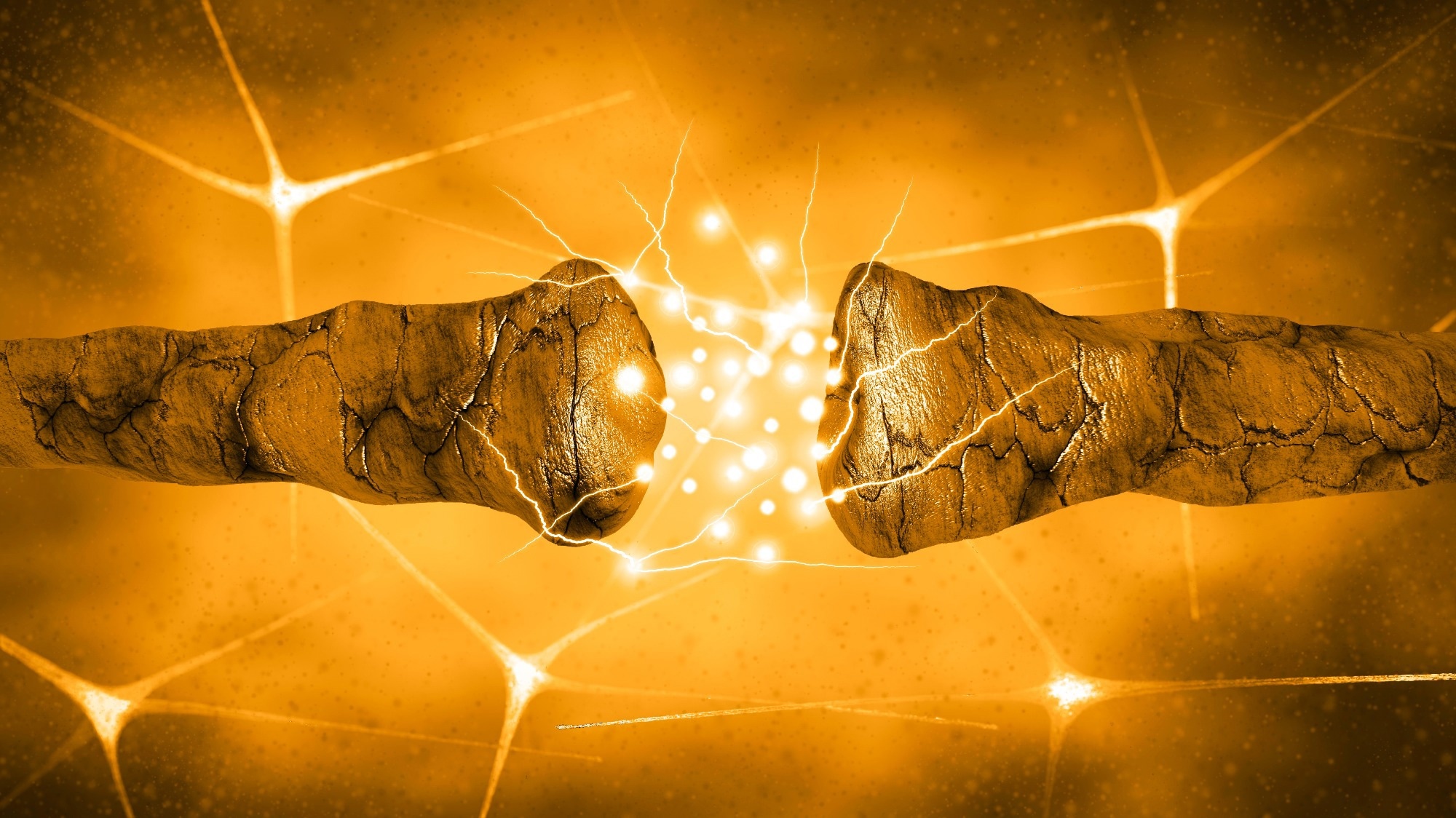Cocaine is highly addictive, and its misuse can exacerbate psychiatric disorders. Although it exerts effects by binding to monoamine transporters, its inhibition of DAT underlies its addictive and rewarding properties. Currently, there are no experimental human DAT (hDAT) structures. Nevertheless, insights from homologs, such as solute carrier 6 (SLC6) family members and Drosophila melanogaster DAT (dDAT), have provided structural information.
 Study: Structure of the human dopamine transporter in complex with cocaine. Image Credit: Naeblys / Shutterstock
Study: Structure of the human dopamine transporter in complex with cocaine. Image Credit: Naeblys / Shutterstock
These reveal a common architecture of 12 transmembrane helices (TM1–TM12) in a pseudo-symmetric fold (the LeuT fold), with the substrate-binding site in the core. In all SLC6 family members, the central substrate-binding site can be accessed from the intracellular or extracellular membrane face, with energy for substrate transport derived from sodium ion (Na+) co-transport. While many also depend on chloride ions (Cl-), whether Cl- is bound/transported remains unclear.
Cl- binding in DAT may allosterically reduce the affinity of the second sodium site (Na2). The Na2 site may be necessary for transporter isomerization to an inward-facing state before substrate release, which then transitions to an outward-open conformation. In the dDAT-cocaine complex, cocaine binds to the central substrate-binding site. However, dDAT has higher sequence homology with the human noradrenaline transporter (hNET) than with hDAT.
The study and findings
In the present study, researchers performed a cryo-electron microscopy (cryo-EM) reconstruction of hDAT bound to cocaine. First, Expi293F cells were used to express Twin-Strep-tagged hDAT (hDATTwin), which was purified in glyco-diosgenin (GDN) micelles. The tag reduced overall dopamine uptake, indicating that hDATTwin had a lower expression than wild-type hDAT when transiently expressed in COS7 cells.
Next, the structure of hDATTwin bound to cocaine was solved using cryo-EM at 2.66 Å resolution. It had an outward-open conformation with the 12 TMs forming the LeuT fold. TMs 11 and 12 were located outside the core domain, with TM12 almost kinked halfway. The extracellular loop 4 (EL4) formed a hairpin-like structure, which partly covered the exit from the central binding site (S1).
The overall structure resembled the outward-facing structures of the human serotonin transporter (hSERT) and dDAT. The researchers investigated whether the purification procedure affected the overall structure. As such, they measured binding to a cocaine analog and found no differences between its affinities of hDAT when expressed in COS7 cells or purified in detergent micelles.
Likewise, affinities for cocaine were not significantly different. hDATTwin was reconstituted into proteo-liposomes with a Na+ gradient, and time-dependent dopamine uptake was measured. Specific uptake was measured, indicating that hDATTwin could assume all conformational states needed for substrate transport, even post-purification.
Cocaine inhibited transport activity at an inhibition constant similar to that in COS7 cells. The cocaine molecule was situated in the hDATTwin core within the interaction distance of S1 residues. The S1 site has three subsites (A – C). The tertiary amine in cocaine’s tropane ring formed an ionic interaction with Asp79 in the subsite A. Besides, cocaine engaged subsite B via its benzene ring, forming edge-to-face π–π interaction with Tyr156.
Three water molecules formed hydrogen bonds around the benzene ring, two of which are absent in dDAT structure. Further, only chloride and Na2 sites were populated, while the first sodium site (Na1) was either collapsed or never established on cocaine binding. A difference between hDATTwin -cocaine and porcine SERT (pSERT)- and dDAT-cocaine complexes was the position of EL4.
In pSERT and dDAT complexes, the loop occupied a similar position, but in the hDATTwin complex, it was displaced 3.7 Å from TM1b along with a 2.2 Å displacement of Trp84 Cα. Moreover, a mantle of non-proteinaceous densities was observed at the interface between the GDN micelle and hDATTwin-cocaine complex, which has not been reported for monoamine transporter cryo-EM reconstructions. These densities were heterogeneous and were mainly present at the periphery of hDATTwin.
Four of these densities were comparable in size and shape; three were situated at previously reported cholesterol sites (CHOL1, CHOL2, and CHOL3), and one (CHOL4) was located below CHOL3. The researchers fitted a cholesteryl hemi-succinate molecule at CHOL2 and a cholesterol molecule in the density at CHOL3. Besides, a cholesterol model was fitted into the density at CHOL4. Molecular dynamics simulations indicated that hNET harbors a CHOL4 analog.
Conclusions
Together, the researchers resolved the cryo-EM structure of the hDAT-cocaine complex at 2.66 Å. The structure was an outward-open conformation with one Na+ present in the Na2 site and a density corresponding to Cl- detected in the chloride site. Notably, the structure was resolved without using molecular fiducials, which are often used in cryo-EM of small membrane proteins. These findings deepen the understanding of cocaine’s stimulant and addictive properties and may assist in the development of targeted medicines for addiction.